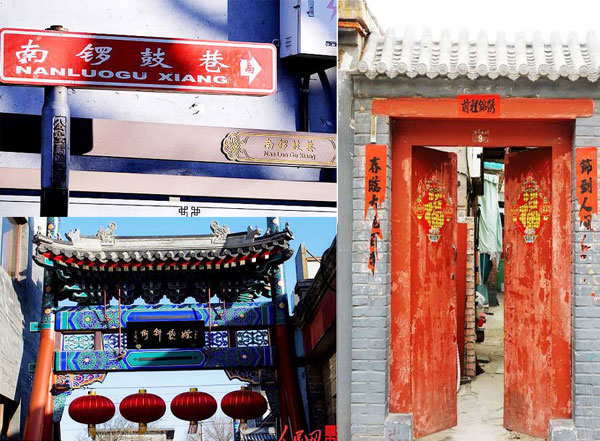|
Three must-go hutongs, insight into old Beijing
No one could tell the exact numbers of hutongs in Beijing. Numerous hutongs, broad or narrow, long or short, intertwined in the city of Beijing. It is no exaggeration to regard the culture of Hutongs as the culture of Beijing. Beijingers’ deep feelings to hutongs come from their love of family and homes in the alley. Hutong, as a carrier of the ancient culture of Beijing, has an eternal charm. Beijing's hutongs witness hundreds of years of vicissitudes and historical changes. Here, each hutong is a mirror of history, and each house tells an old story. For those longing for real insight into the old appearance of Beijing's residential buildings, hutong is a must-see. Among all the various hutongs, we recommend you three must-sees: Nanluoguxiang , Yandai Xiejie and Wudaoying. The bests of Beijing hutongs The narrowest hutong-- Qianshi alley, which is 55 meters long, and is only 0.7 meters wide on average; the narrowest point is only 0.4 meters. Two people have to walk through the alley face to face. The widest alley - Lingjing hutong, an east-west alley located in the Xidan area of Beijing. The widest part is 32.18 meters. The longest hutong – Dongjiaomin Xiang. The total length of the hutong is nearly 3 kilometers. The shortest alley – Yichi Alley. It is also known as one-foot alley with a total length of 10 meters. There are only six houses in the alley. Alley with the most corners – Jiuwan alley. Located in the eastern part of Xuanwu District, it has a total length of about 390 meters, with at least 13 turning corners. The oldest alley - Zhuanta alley. Located near West pailou, it is known as the root of Beijing hutong. The alley came into being in Yuan Dynasty (1267-1368); there were 29 alleys at that time, but only one hutong was recorded, Zhuanta hutong. Nanluoguxiang For those who enjoy walking though, it is great fun to explore the hutongs on foot. Nanluoguxiang is an 800-meter long alley lined with cool cafes, bars and curio shops. For the foreigners in Beijing, Nanluoguxiang is a fusion of old and new Beijing and the one they can get their tongue around the hutong's name. Nanluoguxiang is one of the oldest neighborhoods of Beijing that withholds the most complete quadrangle courtyard (Sihe Yuan). Since the Ming Dynasty (1368-1644), it has been the so-called "rich zone" with residences of senior officials, ultra-rich businessmen and celebrities. Nanluoguxiang not only survives hutong demolition but also attracts business opportunities. Stylish café and shops’ along the alley marks the rebirth of the hutong, where the old and new mixed. Tourists from all over the world love to come here to get “Lost in Beijing”. Nanluoguxiang stretches about 800 meters south-north, with eight hutongs on the each side. Today, bars have sprung up in this old street, making it yet another bar street following the ones at Sanlitun and Shishahai. With its unique cultural connotations, bars here are place to escape from the hustle and bustle of city life. Located in downtown, but with quiet, harmonious and natural atmosphere, Nanluoguxiang is where ancient culture and fashion could be so fit. This heavily renovated hutong is a heaven for backpackers. You can discover dozens of specialty stores at Nanluoguxiang, like those selling handicrafts and clothes. If you want to have a rest after an exhausting trip, you can walk into any cafe and order a simple meal or a pizza. Bus lines: Take bus 107,124,635, get off at Bao Chao Hutong stop to reach the north end of Nanluoguxiang; or take bus 118,13,60,612 to get off at Luoguxiang stop to reach the south end of Nanluoguxiang. Subway lines: Metro Line 6 Nanluoguxiang Station |
| Copyright © China.org.cn. All Rights Reserved 京ICP证 040089号 京公网安备110108006329号 网络传播视听节目许可证号:0105123 京公网安备110108006329号 京网文[2011]0252-085号 |

 0
0 








Go to Forum >>0 Comment(s)